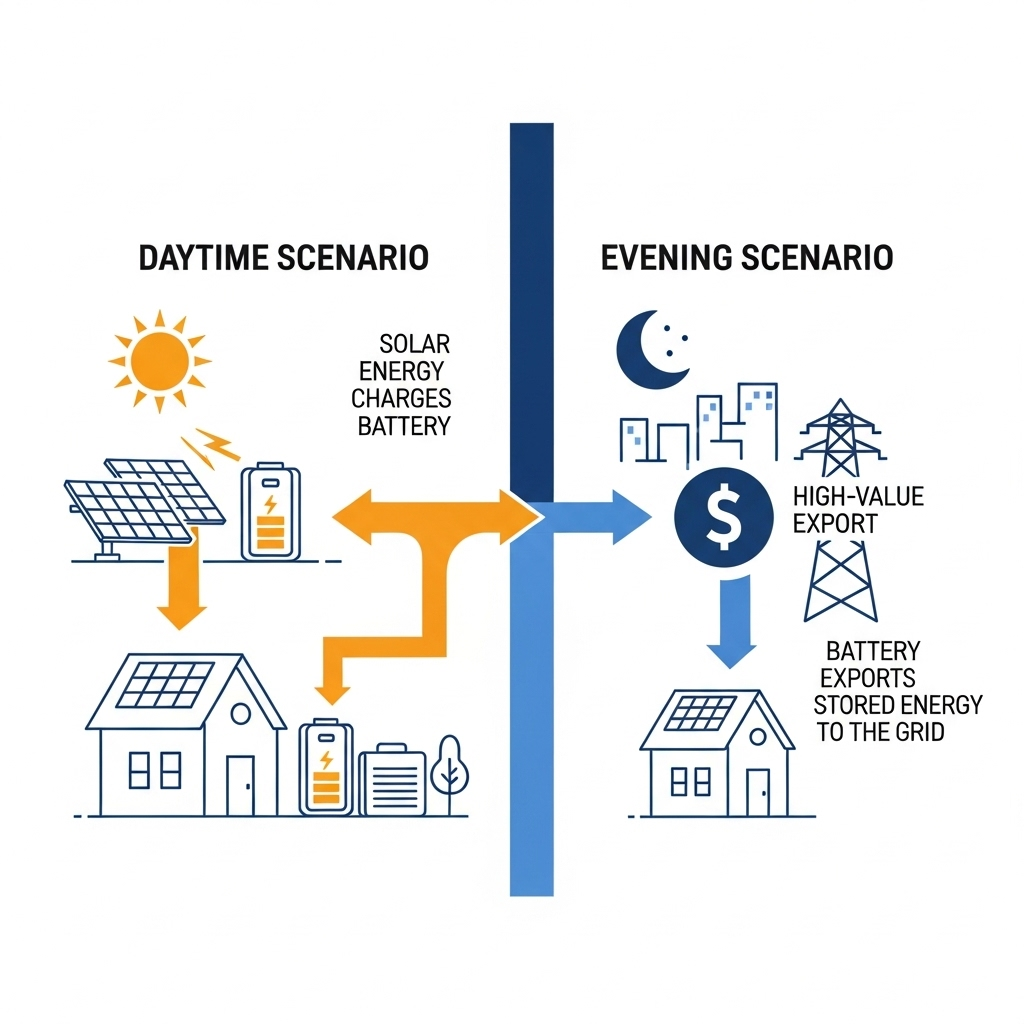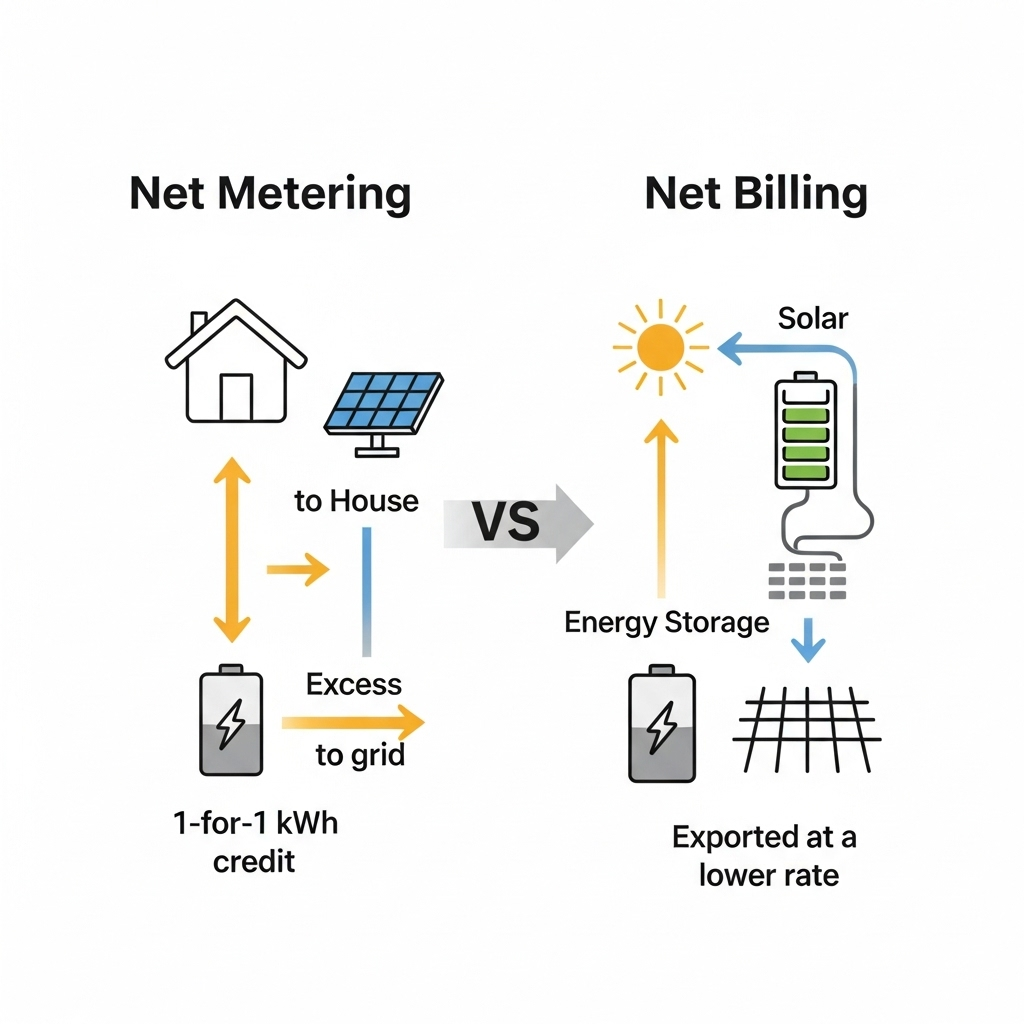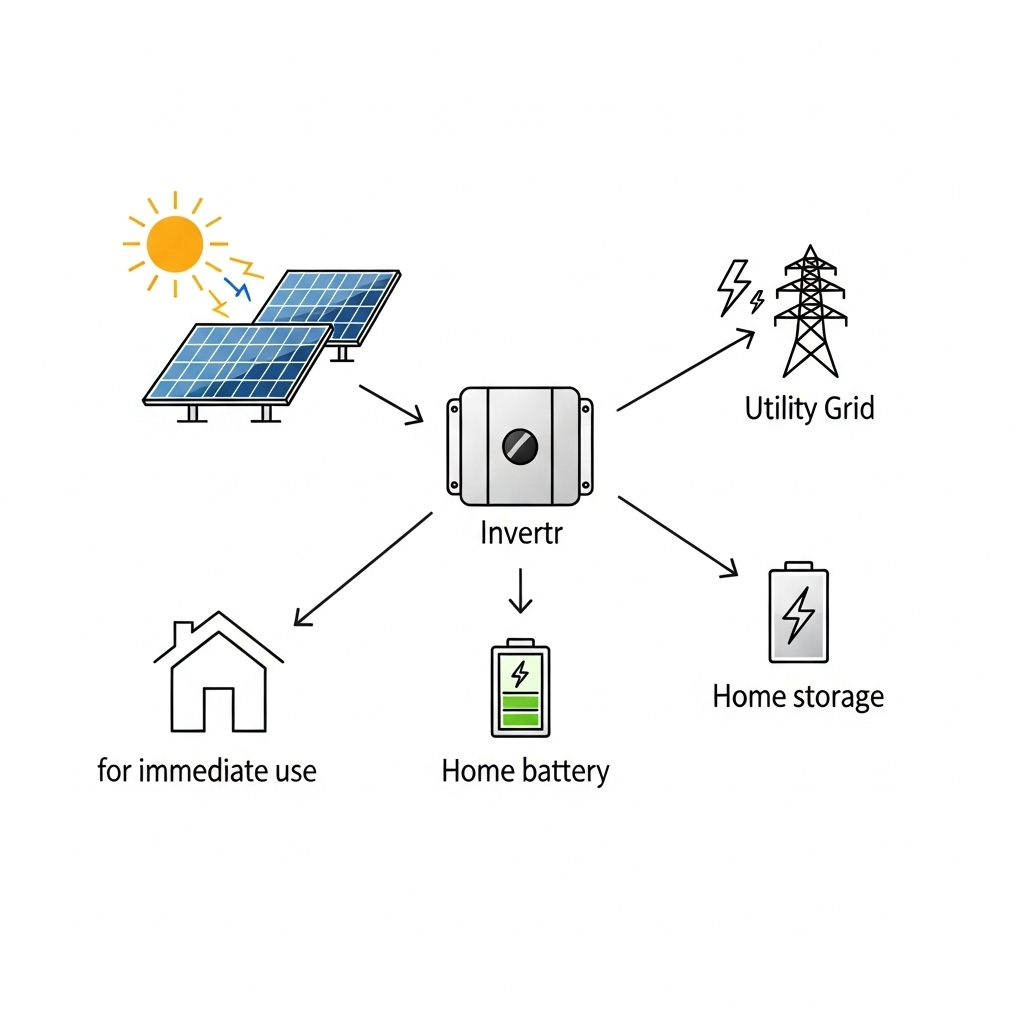The rules for solar energy compensation are changing. For years, net metering offered a simple, one-to-one credit for exported solar power. Now, many regions are adopting more sophisticated models that reflect the dynamic value of energy. One such model is the Value-of-Solar (VoS) tariff. Understanding this approach is crucial for anyone looking to maximize the financial returns of a solar power system. This framework moves beyond simple crediting and pays you based on the actual benefit your solar energy provides to the grid at any given moment.
The Evolution from Net Metering to Value-Based Compensation
The shift away from traditional net metering is driven by the need for a more balanced and sustainable grid. As more solar enters the system, a simple credit system faces challenges.
Limitations of Traditional Net Metering
Net metering treats the power grid like a free, unlimited battery. You export excess solar power during the day and pull it back at night, with your utility bill reflecting the 'net' difference. While simple, this model often fails to account for the utility's actual costs. The value of electricity is not constant; it fluctuates with demand. Midday solar surplus, when generation is high, is typically less valuable to the grid than power supplied during the evening peak, when demand soars and solar production ceases.
Introducing Value-of-Solar (VoS) Tariffs
Value-of-Solar tariffs are designed to correct this imbalance. Instead of a flat retail rate, VoS calculates a specific value for exported solar energy based on a stack of benefits it provides. According to a report by the International Energy Agency (IEA), this approach aims to connect the revenue of distributed generation with the actual value it brings to the system. New York State, for example, transitioned to a value-based system to better promote installations in a way that is most beneficial to the entire power system.
Deconstructing the Value of Solar
A VoS rate is not a single number but a calculation based on several key components. Each component represents a cost the utility avoids thanks to your solar system's contribution.
Core Components of a VoS Rate
A typical VoS tariff is composed of several value streams:
- Avoided Energy Cost: This is the most direct value. It represents the wholesale cost of electricity that the utility does not have to generate or purchase because you supplied it instead.
- Avoided Capacity Cost: Your solar system reduces the overall peak demand on the grid. This helps defer or avoid costly investments in new power plants and transmission lines, creating long-term savings.
- Grid Support Value: Power generated locally reduces the strain on transmission and distribution lines and minimizes energy loss during transport. This benefit has a tangible monetary value.
- Environmental Value: By generating clean energy, your system helps reduce carbon emissions and other pollutants. Some VoS tariffs include a credit for this positive environmental impact.
How Time and Location Impact Value
Under a VoS structure, *when* and *where* you export power matters. Energy sent to the grid during late afternoon peak demand hours is far more valuable than the surplus generated at noon. The table below illustrates how VoS compensation can differ from flat-rate net metering.
| Time of Day | Typical Net Metering Credit/kWh | Hypothetical VoS Credit/kWh | Reason for VoS Rate |
|---|---|---|---|
| 10 AM - 2 PM | $0.15 | $0.08 | High solar generation, low grid demand |
| 4 PM - 8 PM | $0.15 | $0.25 | Low solar generation, high grid demand |
| Off-Peak | $0.15 | $0.05 | Low grid demand and generation cost |
Disclaimer: These are illustrative values. Actual rates vary significantly based on your utility and location.
Strategies to Maximize Earnings with VoS Tariffs
The dynamic nature of VoS tariffs creates an opportunity for savvy homeowners. With the right equipment, you can strategically control your energy exports to sell power when it is most valuable, dramatically improving your payback optimization.
The Role of Energy Storage Systems (ESS)
A home battery or Energy Storage System (ESS) is the key to unlocking the full potential of VoS tariffs. Instead of exporting your excess solar power immediately at a potentially low midday rate, you can store it in your battery. This stored energy can then be used in two ways: power your home after sunset to avoid buying expensive peak-rate electricity, or export it to the grid during the high-value evening hours. This practice, known as energy arbitrage, turns your solar-plus-storage system into a small, profitable power plant.
Smart Export Scheduling
Modern energy storage systems come with intelligent software that can automate this process. By integrating with utility price signals, the system's controller can make real-time decisions. It determines the most financially advantageous action at any moment: use the solar power now, store it for later, or export it to the grid. This automated optimization ensures you are always maximizing your returns without needing to manually manage your system.
Sizing Your System for VoS
Under a VoS tariff, the specifications of your battery are critical. A battery with sufficient capacity can store your entire midday surplus, while a high power rating allows you to discharge that energy quickly to meet peak demand windows. Understanding the key metrics of your system is crucial. For a detailed breakdown of how to evaluate system capabilities, you can review this ultimate reference on solar storage performance, which covers important performance indicators for solar and storage hardware.
Real-World Application and Future Outlook
Value-based compensation is not just a theoretical concept; it is being implemented in progressive energy markets. These programs are reshaping the relationship between homeowners and the grid.
Pioneering VoS Programs
As noted in the IEA analysis, well-designed remuneration rules can balance the interests of consumers, utilities, and regulators. The goal is to create incentives that drive investment while ensuring grid stability. Initiatives like the U.S. Department of Energy's SunShot program have long supported innovative approaches to grid integration. A SunShot-funded project, for instance, helped Hawaiian Electric clear its interconnection backlog by testing advanced inverters, enabling thousands of solar systems to connect to the grid. This highlights the importance of technology and policy working together.
What This Means for Solar Homeowners
The move toward VoS tariffs signals a shift from being a passive energy generator to an active grid participant. Your solar-plus-storage system becomes a flexible asset that can respond to the grid's needs. This not only increases your financial returns but also contributes to a more resilient and efficient energy network for everyone. By embracing this technology, you position yourself to benefit from the grid of the future.
Final Thoughts
Value-of-Solar tariffs represent a more precise and equitable method for solar export compensation. While more complex than flat-rate net metering, they offer a clear path to enhanced financial returns for those willing to adapt. By pairing your solar panels with an intelligent energy storage system, you can take control of your energy, schedule your exports for maximum profit, and significantly accelerate your solar investment payback. This strategic approach empowers you to achieve greater energy independence and financial savings.
Frequently Asked Questions
What is a Value-of-Solar (VoS) tariff?
A Value-of-Solar (VoS) tariff is a compensation structure that pays solar system owners for exported energy based on its actual value to the grid. This value is calculated using multiple factors, including the time of day, avoided energy and capacity costs, and environmental benefits, rather than a flat retail rate.
Is VoS better than net metering?
For a solar-only system, net metering can sometimes offer better returns if the credit is at the full retail rate. However, for a solar-plus-storage system, a VoS tariff often provides a greater opportunity for payback optimization. It allows you to use a battery to store energy when its value is low and sell it back to the grid when its value is high, creating a new revenue stream.
Do I need a battery to benefit from a VoS tariff?
While a solar-only system can still earn credits under a VoS tariff, a battery storage system is necessary to fully capitalize on it. A battery gives you the control to store energy and export it strategically during peak-price hours, which is the primary method for maximizing your earnings under this type of rate structure.





Leave a comment
All comments are moderated before being published.
This site is protected by hCaptcha and the hCaptcha Privacy Policy and Terms of Service apply.